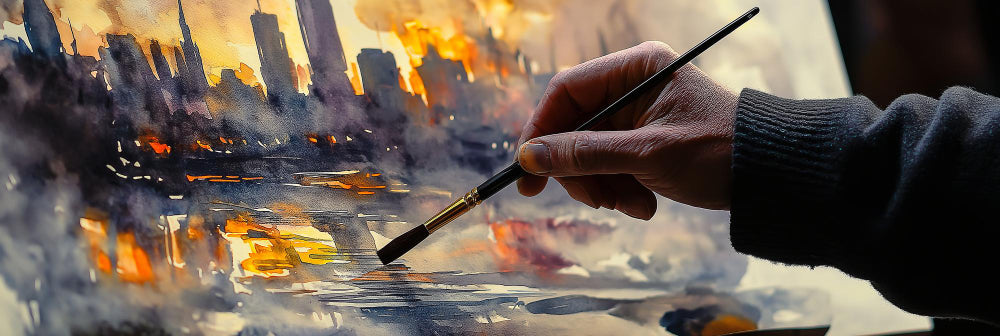
How to Combine Realism and Abstraction in Your Artistic Drawings
Share
How to Combine Realism and Abstraction in Your Artistic Drawings
Combining realism and abstraction will give your artistic drawings a lively, stimulating work that is guaranteed to pique everybody's interest. Since these two opposing styles of art exist side by side with a balance between accuracy and imagination, it can give an artist a scope of taking different interpretation while still being recognized. Here are some tips on how you can effectively merge realism and abstraction in your artwork.
1. Learn the Essentials of Realism
Realism usually requires a lot of "truthfulness" in describing the subject matter at hand, be it a figure, landscape, or object. The best way to combine realism with abstraction is by first mastering the basics of realistic drawing. Focus on proportions, light, shadow, and texture, all of which add up to give your work a solid foundation of recognizable forms. Then, by mastering all these elements, you will be enabled to manipulate or distort them for further explorations of the abstract without losing the crux of the thing you're trying to draw.
2. Experiment with Composition
Composition can be an important key to both blending realism and abstraction. Let's consider this idea of realistic focal points set against an abstract background. A detailed portrait, for example, might be imposed over a fluidly abstracted landscape of shapes and colors. With such juxtapositions of detailing in one area and free-forming elsewhere, it is easily producing interest and drawing a viewer's eye through the artwork.
3. Play with Proportions and Perspective
Abstraction may often be distorted reality, and the two easily meet in proportional distortions or perspectives. One can take a realistic view of something through drawing, but it starts becoming abstract by elongating or shrinking certain parts or warping them-the recognizable turns into a tension between the recognizable and the surreal.
4. Use Abstract Patterns or Textures
Another exciting way to mix realism with abstraction is to put real and not-so-real elements into the same realistic drawing. You can keep up the subject structure but add expressive, non-representational elements. For instance, leaves on a hyper-realistic tree may be abstracted, and a still life may have fragmented geometric patterns combined with detailed objects.
5. Experiment with Color and Contrast
Color may often become a very powerful tool in the juxtaposition between the real and the abstract. The whole realistic composition can be interpreted in natural colors, and the abstract will perhaps use very deep or strongly contrasting tones.
6. Good contrast between realistic shading and abstract color blocks adds a sense of depth and complexity, and such compositions should beg for interpretation rather than present clear situations.
One of the strengths of realism and abstraction intermix is that the crowd is challenged to think about the work more personally. Emotional abstraction can be paired with realism in such a way that carries the person being portrayed in the work. This combination opens doors for personal interpretation and allows each observer to connect personally with the work in question.
Conclusion
The collision of elements comprising realism and abstraction makes it an infinite panoply of possibility, affording versatility to the subjective creativity of artists. Understanding the basics of realism and incorporating techniques such as proportion alteration, bold color usage, and expressive patterns can merge realities with abstract effects that break the conventional boundaries and encourage further exploration.
How to Combine Realism and Abstraction in Your Artistic Drawings








